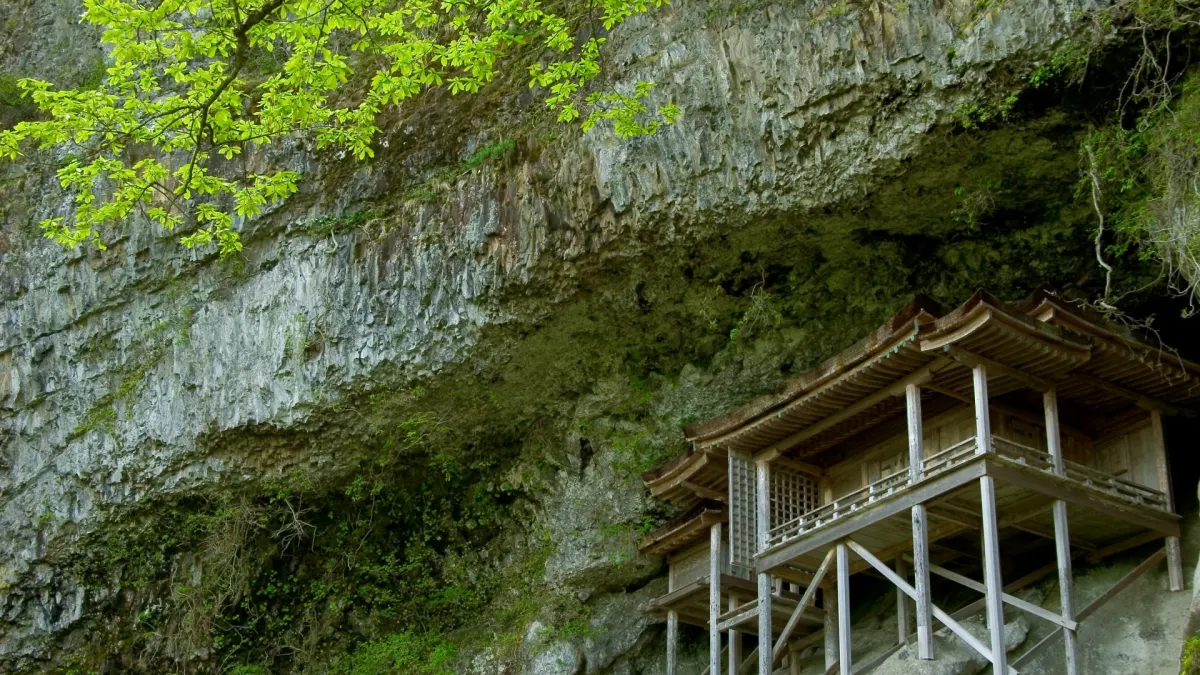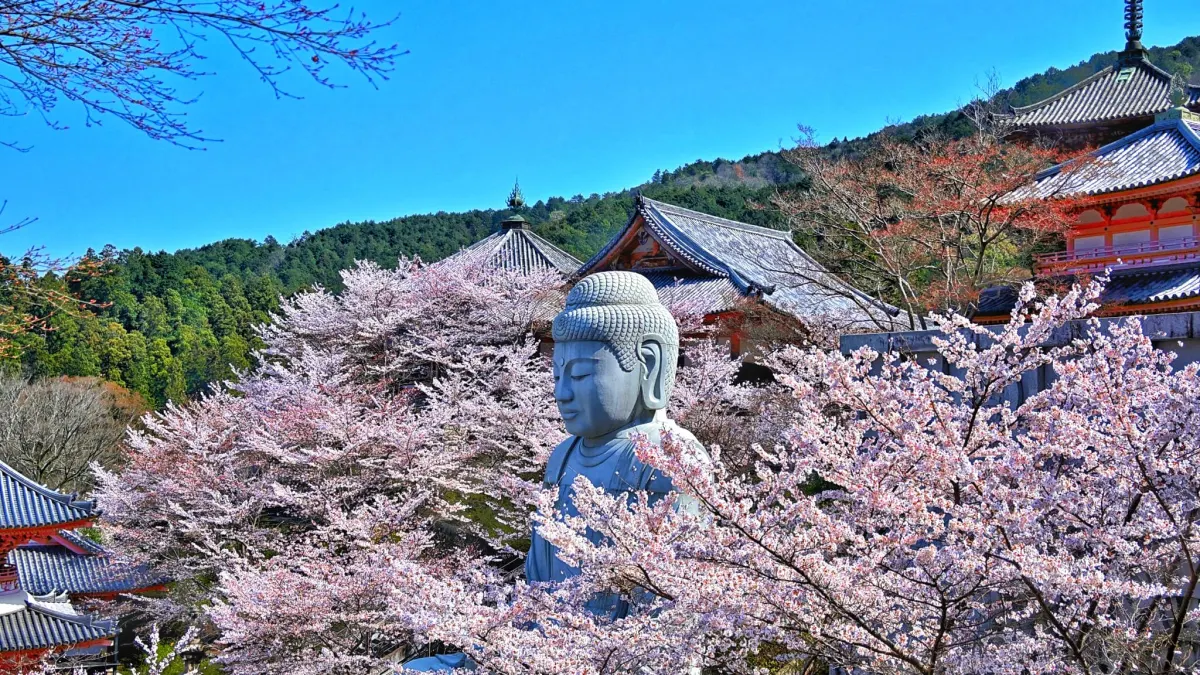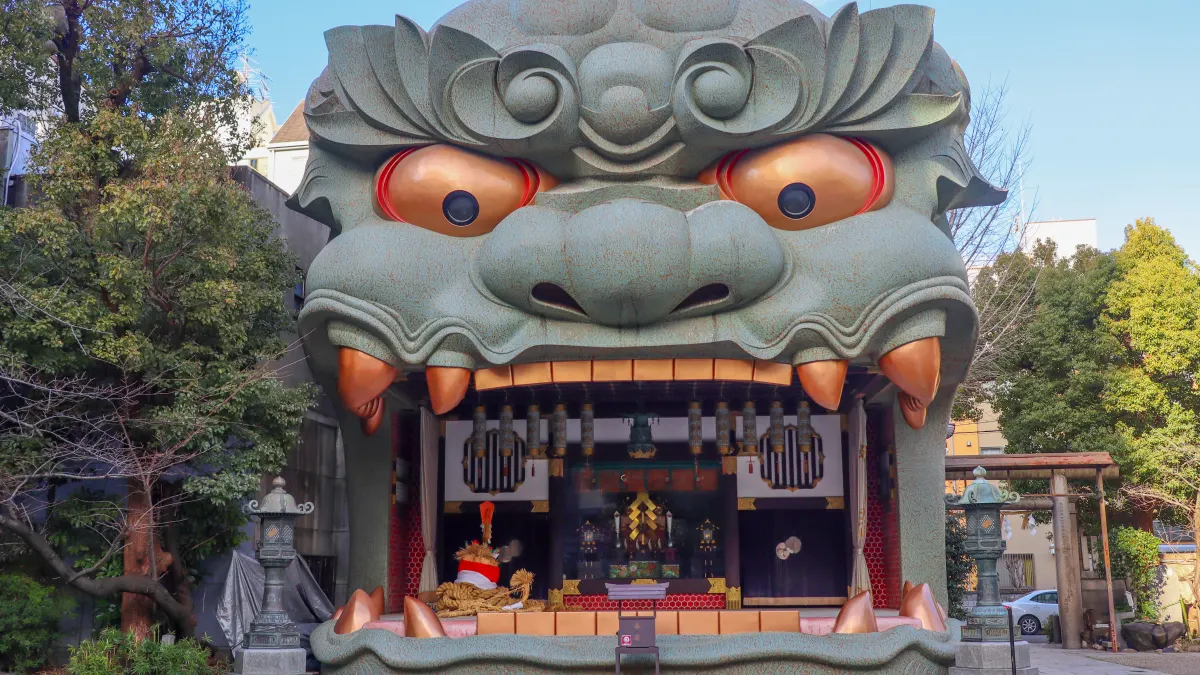Perched high on the cliffs of Mount Mitoku in Tottori, Nageire-dō at Sanbutsu-ji Temple is one of Japan’s most dramatic religious sites. Built over 1,300 years ago directly into a sheer rock face, this wooden hall seems to defy gravity, earning it the title of Japan’s most dangerous National Treasure. Reaching it involves a challenging climb through rugged forest trails and chain-assisted ascents, a journey once taken by ascetic monks as part of shugendō practice.
While visitors cannot enter the fragile hall itself, the view from the final platform is unforgettable, the tiny temple clinging impossibly to the cliffside, framed by sweeping mountain scenery. Along the trail, smaller halls perched on narrow ledges add to the surreal, photogenic atmosphere, making Nageire-dō not only a test of endurance but also a rare chance to capture one of Japan’s most striking spiritual landscapes.





